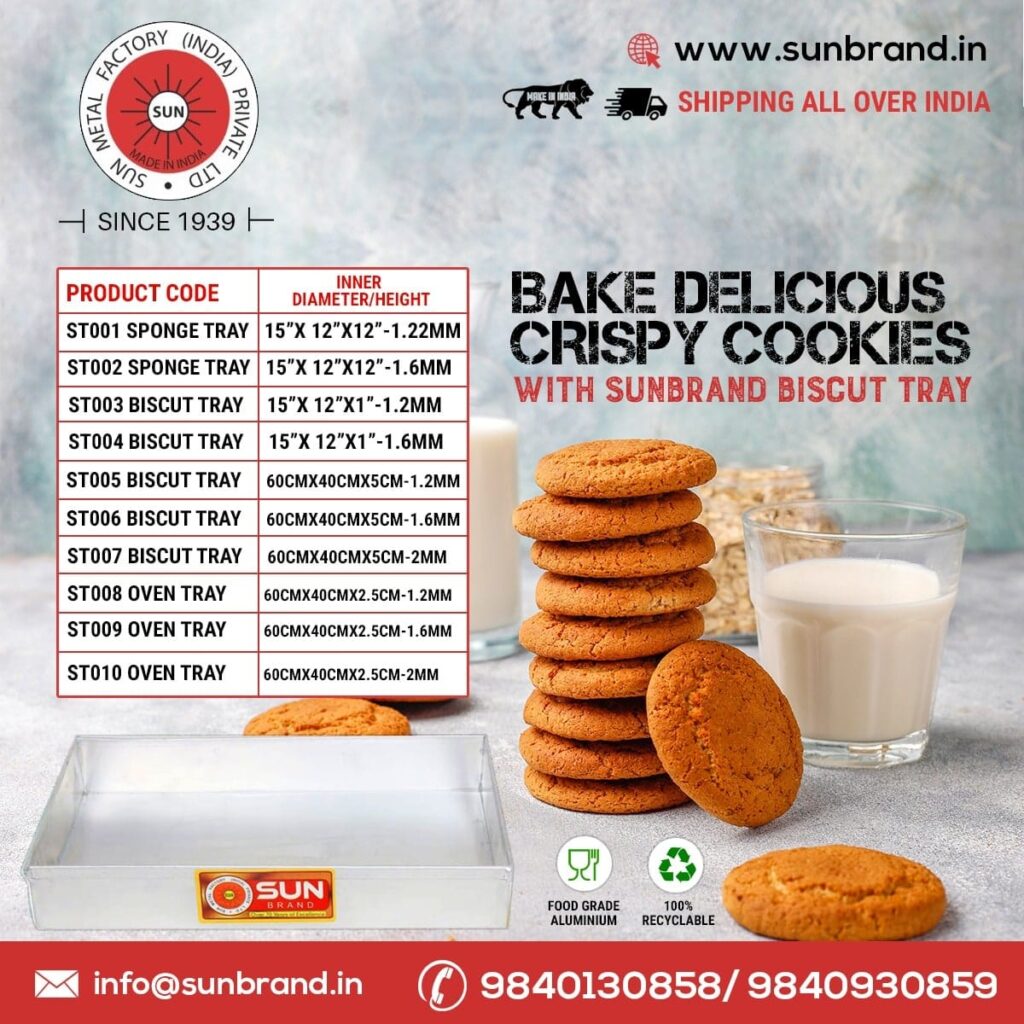Nothing beats a freshly made cookie out of all the delicacies you can create! A chewy, crispy cookie, hot out of the oven, is exactly what we need to lift our spirits. They’re popular with kids, easy to sell at bake sales, and a great meal to bring to parties or get-togethers with friends.
Whether you want to establish a cookie pastry business or simply want to have your own freshly baked cookies for enjoyment, mastering the basics of making cookies is crucial. If you’re a newbie, here are a few ideas to get you started.
- Follow the recipe
Baking is based on simple chemistry. When one ingredient or measurement goes wrong then the cookies will turn out bad. To avoid this you must follow the recipe clearly. Read the recipe and make sure you understand each and every step. Also, make sure you have all the ingredients because substitutions that are not given can also give you undesirable cookies.
- Use butter and eggs at room temperature
If you dislike dense flat cookies then it is best to use all ingredients at room temperature, unless it is noted in the recipe. Butter at room temperature is best for creaming process. This way it incorporated more air into the dough thereby helping the cookies to rise well.
To soften butter before baking cut it into small pieces and let it sit for 30 minutes at room temperature. For a quick method microwave butter at 5 second intervals. Make sure not to melt the butter.
To cream butter and sugar together add softened butter to a bowl and beat it until the butter softens. Then add sugar to the butter and keep beating at medium speed until the mixture turns fluffy and light.
- Avoid over-mixing the dough
The cookie dough will become too tough if you handle it too much. When it comes to rolling and cutting the cookies into pieces, try working with half of the dough. The other half of the cookie dough should be chilled since cold dough is much simpler to work with.
- Grease the baking tray
Read the recipe before greasing the pan because some recipes do not recommend greasing the cookie dough will have enough fat to keep the cookies from sticking to the tray. In case you grease the baking tray even when not specified then the cookie dough might spread too much.
To grease a baking tray Use paper towel or waxed paper, apply a little amount of shortening. Cover the bottom and sides of the pan with a thin layer of shortening. Coat the crevices where the edges of the pan meet the pan’s bottom.
- Preheat the oven.
Check the temperature of your oven using an oven thermometer before baking to be sure it’s accurate. Many ovens aren’t properly heated. You can wind up with an undercooked or burnt-bottom cookie if your oven temperature is off. Also, remember to preheat the oven before placing your cookie tray inside!
- Chill the cookie dough before baking
Chilling the dough is an important step to baking perfect cookies. The process of chilling the cookie dough can re-solidify the butter and fats used in the recipe. To chill the dough place the dough in the refrigerator and let it sit for 30 minutes. The cookies will spread too much, be thin, and non-uniform in shape if you don’t refrigerate your dough.
- Use good tools:
Before you begin, gather all of the dishes, pans, and utensils you’ll need on your counter or worktable. Standard measuring cups and spoons should be used.
- Use a high-quality baking tray
Use the type of baking pan recommended in the recipe. The yield of a recipe is meticulously calculated, and changing the tray size affects the baking temperature and time.
A baking pan or dish’s size is determined by measuring from inner edge to inside edge across the top of the container. The depth is also measured from the bottom to the top of the rim on the inside of the pan or dish. Carefully prepare the pan according to the recipe. Place pans as close to the oven’s center as feasible. Do not stack pans on top of one other, and do not overcrowd the oven (this makes for uneven baking).
- Use high-quality ingredients
With second-rate ingredients, you can’t expect a first-rate product. Make sure your ingredients are high-quality and fresh.
- For even baking
Place the oven rack in the centre of the oven and bake one sheet of cookies at a time for more equal baking. If you like to bake two sheets, arrange the racks so that the oven is divided into thirds and switch the cookie sheets halfway through baking from top to bottom and back to front. Before baking the first sheet or pan of cookies, preheat the oven for 10 to 15 minutes. Using an oven thermometer, check the temperature of the oven.
- Checking for doneness
When it comes to cookies, the best indicators of doneness are time and look. Always keep a timer handy. Most recipes provide a variety of baking times; always double-check after the recipe’s minimum time.
Depending on the cookie, the color of drop, rolled, and refrigerated cookies can range from barely baked to medium golden brown. Bake the cookies for the shorter time suggested in the instructions for softer, chewier cookies. Allow enough room between cookies when laying dough on cookie sheet, generally 1-1/2 to 2 inches unless the recipe specifies otherwise.
The right baking tray is required for perfectly cooked cookies! SunBrand baking trays are flat and sturdy. It has no edges on one side so that the cookies can slide out easily. The tray is made of aluminum hence the heat can uniformly bake the cookies.

